Shubhabrata Mukherjee
School of Science and Engineering, University of Missouri-Kansas City, Kansas City, MO, USA
MetaGreen: Meta-Learning Inspired Transformer Selection for Green Semantic Communication
Jun 22, 2024
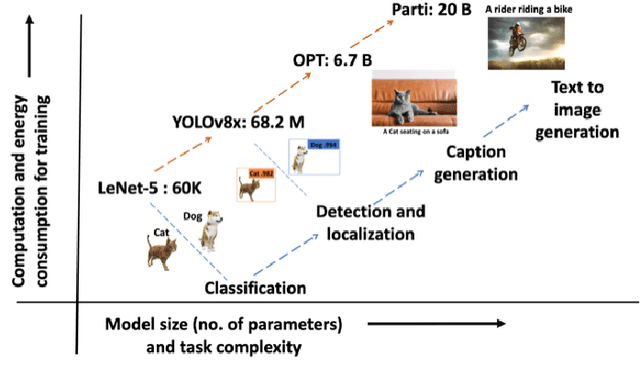
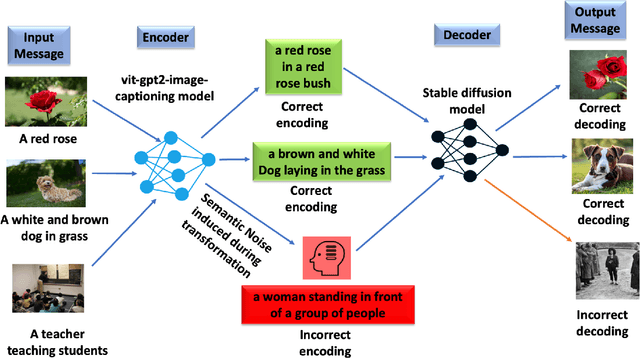
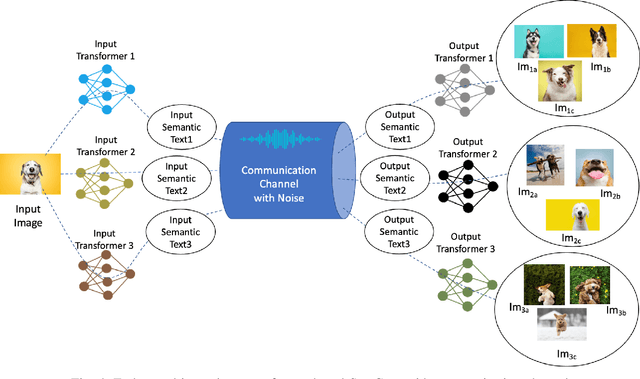
Abstract:Semantic Communication can transform the way we transmit information, prioritizing meaningful and effective content over individual symbols or bits. This evolution promises significant benefits, including reduced latency, lower bandwidth usage, and higher throughput compared to traditional communication. However, the development of Semantic Communication faces a crucial challenge: the need for universal metrics to benchmark the joint effects of semantic information loss and energy consumption. This research introduces an innovative solution: the ``Energy-Optimized Semantic Loss'' (EOSL) function, a novel multi-objective loss function that effectively balances semantic information loss and energy consumption. Through comprehensive experiments on transformer models, including energy benchmarking, we demonstrate the remarkable effectiveness of EOSL-based model selection. We have established that EOSL-based transformer model selection achieves up to 83\% better similarity-to-power ratio (SPR) compared to BLEU score-based selection and 67\% better SPR compared to solely lowest power usage-based selection. Furthermore, we extend the applicability of EOSL to diverse and varying contexts, inspired by the principles of Meta-Learning. By cumulatively applying EOSL, we enable the model selection system to adapt to this change, leveraging historical EOSL values to guide the learning process. This work lays the foundation for energy-efficient model selection and the development of green semantic communication.
A secure and private ensemble matcher using multi-vault obfuscated templates
Apr 08, 2024Abstract:Given the irrevocability of biometric samples and mounting privacy concerns, biometric template security and secure matching are among the essential features of any well-designed modern biometric system. In this paper, we propose an obfuscation method that hides the biometric template information with just enough chaff. The main idea is to reduce the number of chaff points to a practical level by creating n sub-templates from the original template and hiding each sub-template with m chaff points. During verification, s closest vectors to the biometric query are retrieved from each vault and then combined to generate hash values that are compared with the stored hash value. We demonstrate the effectiveness of synthetic facial images, generated by a Generative Adversarial Network (GAN), as ``random chaff points'' within a secure-vault authorization system. This approach safeguards user identities during training and deployment. We tested our protocol using the AT&T, GT, and LFW face datasets, with the ROC areas under the curve being 0.99, 0.99, and 0.90, respectively. These numbers were close to those of the unprotected templates, showing that our method does not adversely affect accuracy.
MODIPHY: Multimodal Obscured Detection for IoT using PHantom Convolution-Enabled Faster YOLO
Feb 12, 2024
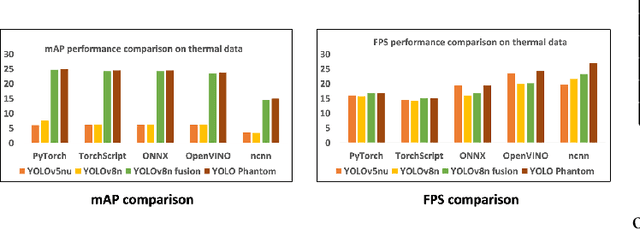
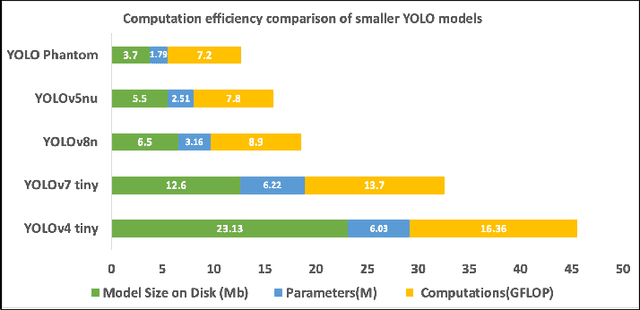

Abstract:Low-light conditions and occluded scenarios impede object detection in real-world Internet of Things (IoT) applications like autonomous vehicles and security systems. While advanced machine learning models strive for accuracy, their computational demands clash with the limitations of resource-constrained devices, hampering real-time performance. In our current research, we tackle this challenge, by introducing "YOLO Phantom", one of the smallest YOLO models ever conceived. YOLO Phantom utilizes the novel Phantom Convolution block, achieving comparable accuracy to the latest YOLOv8n model while simultaneously reducing both parameters and model size by 43%, resulting in a significant 19% reduction in Giga Floating Point Operations (GFLOPs). YOLO Phantom leverages transfer learning on our multimodal RGB-infrared dataset to address low-light and occlusion issues, equipping it with robust vision under adverse conditions. Its real-world efficacy is demonstrated on an IoT platform with advanced low-light and RGB cameras, seamlessly connecting to an AWS-based notification endpoint for efficient real-time object detection. Benchmarks reveal a substantial boost of 17% and 14% in frames per second (FPS) for thermal and RGB detection, respectively, compared to the baseline YOLOv8n model. For community contribution, both the code and the multimodal dataset are available on GitHub.
Transformers for Green Semantic Communication: Less Energy, More Semantics
Oct 11, 2023Abstract:Semantic communication aims to transmit meaningful and effective information rather than focusing on individual symbols or bits, resulting in benefits like reduced latency, bandwidth usage, and higher throughput compared to traditional communication. However, semantic communication poses significant challenges due to the need for universal metrics for benchmarking the joint effects of semantic information loss and practical energy consumption. This research presents a novel multi-objective loss function named "Energy-Optimized Semantic Loss" (EOSL), addressing the challenge of balancing semantic information loss and energy consumption. Through comprehensive experiments on transformer models, including CPU and GPU energy usage, it is demonstrated that EOSL-based encoder model selection can save up to 90\% of energy while achieving a 44\% improvement in semantic similarity performance during inference in this experiment. This work paves the way for energy-efficient neural network selection and the development of greener semantic communication architectures.
 Add to Chrome
Add to Chrome Add to Firefox
Add to Firefox Add to Edge
Add to Edge